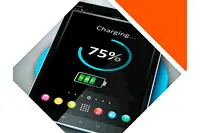Electronics News
Archive : 9 December 2014 год
Researchers in the US are working on a low cost, wireless sensor that can identify spoiled food early by detecting hazardous gases in the air.
The device, created by a team from MIT, is then able to share its data with a smartphone, potentially alerting users to mouldy food.
"The beauty of these sensors is that they are really cheap," says Professor Timothy Swager. "You put them up, they sit there, and then you come around and read them. There's no wiring involved. There's no power. You can get quite imaginative as to what you might want to do with a technology like this."
Essentially, the sensors are modified Near Field Communication (NFC) tags. The team began by punching a hole in the tag's electronic circuit and before replacing the missing link with carbon nanotubes designed to detect particular gases. The nanotubes were then drawn on using mechanical pencils.
The devices are powered by short pulses of magnetic fields emitted by the smartphone used to read them. Normally, these pulses induce an electric current in the tag's circuit that keeps it running.
However, in the modified tags, once the carbon nanotubes smell a targeted gas in the air the radio frequencies at which it receives, these pulses are shifted.
The sensor will only respond to the reading smartphone if the frequencies are unchanged, therefore indicating whether or not a targeted gas is present.
At the moment, each sensor is only able to detect one gas, and the smartphone must be held within 5cm to pick up a reading. However, the researchers are seeking to integrate Bluetooth technology to expand the range.
They say the sensors could be used for everything from detecting dangerous gas levels in manufacturing plants to identifying explosives and environmental pollutants.
Author
Laura Hopperton
Source: www.newelectronics.co.uk
 Freescale has broadened its wireless charging portfolio with the a 15W device which is Qi compliant. The part is said to pave the way for 'ultra fast' wireless recharging for larger mobile devices, including tablets, large screen smartphones and portable industrial and medical equipment.
Freescale has broadened its wireless charging portfolio with the a 15W device which is Qi compliant. The part is said to pave the way for 'ultra fast' wireless recharging for larger mobile devices, including tablets, large screen smartphones and portable industrial and medical equipment.
"Today's mobile products offer a broader range of features, functionality and form factors than ever before, requiring developers of wireless charging systems to accommodate larger batteries and enable faster recharge speeds," said Denis Cabrol, director of global marketing and business development for Freescale's MCU group. "Freescale's industry-first 15 W solution is engineered to address these evolving market requirements, while helping to streamline product development and unleash design creativity."
The solution includes two 15W ICs: the WPR1516 receiver chip and MWCT1012 transmitter. Developers can get to production quickly by using available corresponding firmware libraries, which provide the core functionality required to implement state-of-the-art wireless charging systems. The solution also includes an application programming interface that can be used to modify or adjust library functionality, allowing for the addition of custom application code and a differentiated end-product.
According to the company, the chips will allow a typical tablet with a 4000 mAh battery to be charged 'in a few hours, rather that the eight hours required to charge from a standard USB port.
Author
Graham Pitcher
Source: www.newelectronics.co.uk
